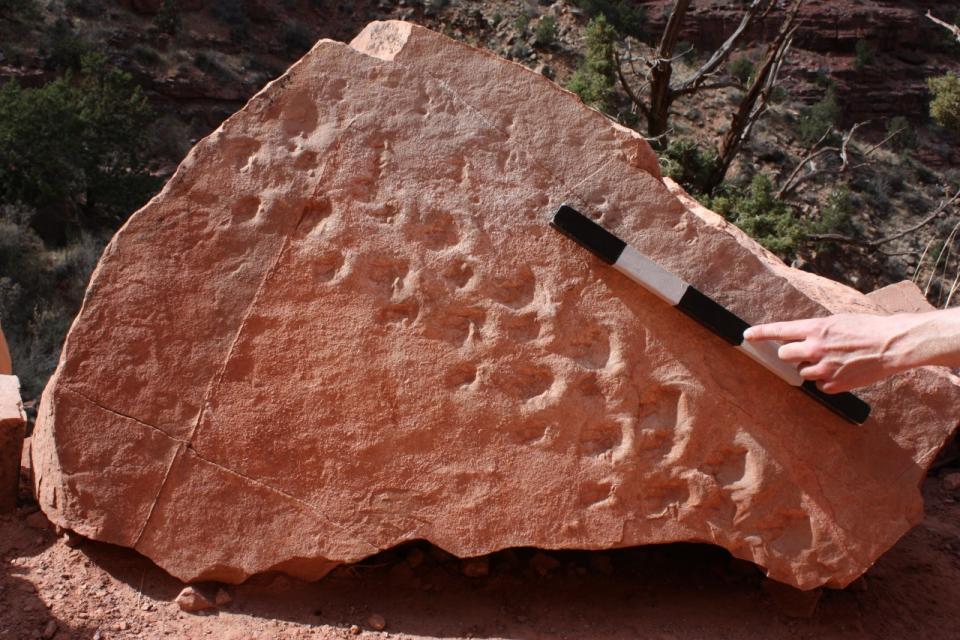Ancient footprints from 313 million years ago found in Grand Canyon

Footprints found on a boulder which had stood in plain view of tourists in the Grand Canyon actually date from an astonishing 313 million years ago, US researchers have confirmed.
The boulder containing the tracks fell from a cliff above and recorded the steps of two separate animals on the slopes of a sand dune.
Stephen Rowland, a paleontologist at the University of Nevada Las Vegas said, ““These are by far the oldest vertebrate tracks in the Grand Canyon, which is known for its abundant fossil tracks.
"More significantly, they are among the oldest tracks on Earth of shelled-egg-laying animals, such as reptiles, and the earliest evidence of vertebrate animals walking in sand dunes."
Read more; Ancient remains could rewrite history of human intelligence
The tracks were first spotted in 2016 by Norwegian geology professor, Allan Krill, who was hiking with his students in the Grand Canyon National Park.
Krill spotted a boulder containing conspicuous fossil footprints and contacted Rowland, a colleague.
The track-bearing boulder fell from a nearby cliff-exposure of the Manakacha Formation.
The presence of a detailed geologic map of the strata along the Bright Angel Trail, together with previous studies of the age of the Manakacha Formation, allowed the researchers to pin down the age of the tracks quite precisely to 313 million years.
The arrangement of the animals’ footsteps could also throw light on how animals evolved the researchers say.
Read more: Ancient skull found in China could rewrite history of the human race
The researchers’ reconstruction of this animal’s footfall sequence reveals a distinctive gait called a lateral-sequence walk, in which the legs on one side of the animal move in succession, the rear leg followed by the foreleg, alternating with the movement of the two legs on the opposite side. “
“Living species of tetrapods – dogs and cats, for example – routinely use a lateral-sequence gait when they walk slowly,” says Rowland.
“The Bright Angel Trail tracks document the use of this gait very early in the history of vertebrate animals. We previously had no information about that.”

 Yahoo Sport
Yahoo Sport 






































